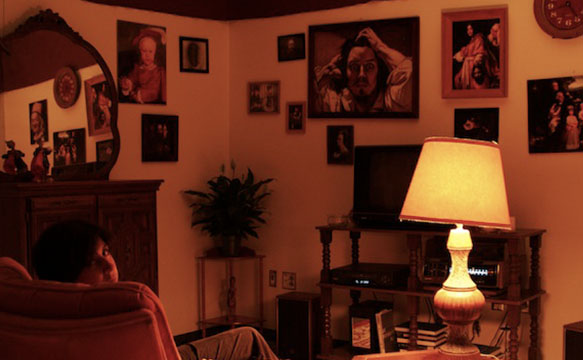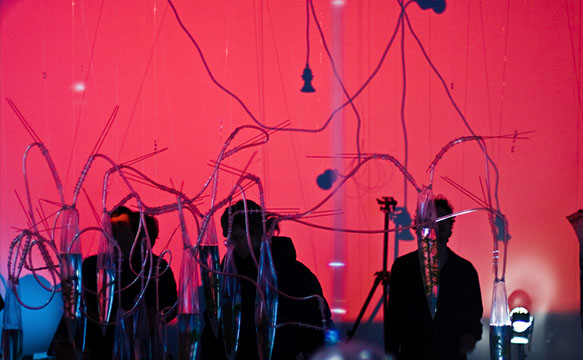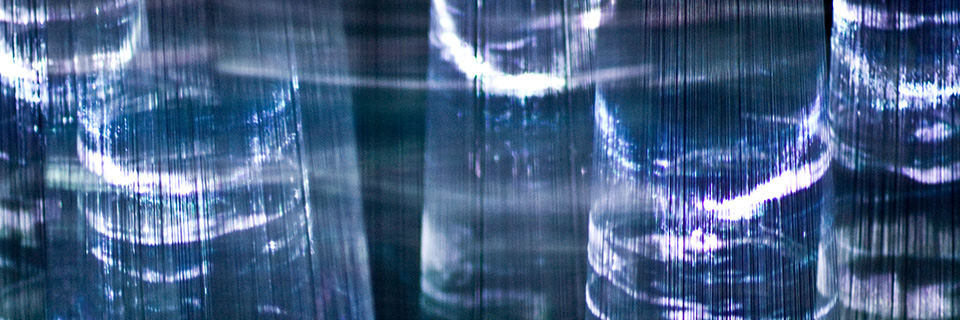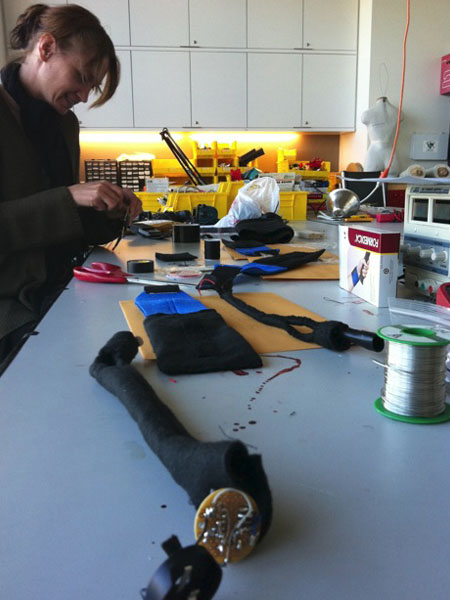The Other
Felt presence, a sensation that ‘‘someone is there’’, is an integral part of our everyday experience. It can manifest itself in a variety of forms ranging from most subtle fleeting impressions to intense hallucinations of demonic assault or visions of the divine. Felt presence phenomenon outside of the context of neurological disorders is largely neglected and not well understood by con- temporary science. This project focuses on the experiential and expressive qualities of the phenomenon and attempts to bring forth the complexity and the richness of possibilities for inter- and intrasubjective awareness represented by these experiences. Are these simply misperceptions and hallucinations heightened and enforced by the mystical or superstitious mind? Or are these entities projections of our own ‘‘selves’’, elements of self-estrangement? How are such experiences shaping our understanding of ourselves and of others? And finally, what is the interplay between intersubjective, private experiences and private or public spaces of dwelling?
The Other experimental space symbolizes the dwelling place where virtual hosts are to be indirectly encountered (Fig. 1). In the corner of the laboratory, the two walls were made of semi-translucent fabric (see Fig. 2) which in the darkness gave it a particular glowing quality. When the participant passed through a small corridor in front of the laboratory space (see ‘Hallway’ on Fig. 1) and alone looked for the ‘‘orange armchair in the room’’ (according to the only instruction given) in the unlit and almost empty laboratory space, they would perceive the room as the lighthouse and the only possible shelter in the space. Inside, it had an appearance of the living room, carefully domesticated in contrast to the sterile and office-like space of the laboratory and the rest of the building (see Fig. 3). The armchair and softly dimmed light of the wood-covered statuesque table lamp formed the center of the space cho- sen for participants to sit down for the experiment. The interior of the room seemed ordinary at first glance: a TV set playing a ballet with muted sound, a cabinet, and shelves. Hidden was the allusion to the short spontaneous nap which commonly results in sleep paralysis incidents and sitting in the armchair in front of flashing TV with the sound muted is often what one remembers last before falling asleep.
The decorative abundance of the space was far from ordinary: statuettes, fantastic masks, and above all: several dozen framed portraits. Obsessively suggesting self and other in the Freudian and Lacanian sense (see Solomonova, this issue), the portraits by artists from different epochs and schools, stressed the grotesqueness of the space: its simultaneously horrifying and comic aspect. What first appears as exaggerated and comic may not look the same after a few minutes. The experience of being surrounded by gazes from everywhere, the flickering of the TV, hearing quiet sounds of wind chimes and beads drifting in the air, and not being able to apprehend the space in its wholeness, after a short while can become overwhelming to the extent of being almost paralyzing. In this effect, another hidden reference to sleep paralysis again shows through.
These are some descriptions of the space by participants: ‘‘I had a feeling that I was a child at home in front of a TV, alone, and I’m waiting for my parents to come home, and I’m afraid that someone is hiding in the room’’; ‘‘An old house, maybe a house with ghosts (like a grand-parents’ house). But very comfortable.’’; ‘‘Creepy old man’s room’’; ‘‘That was a very creepy experience. As soon as I sat down I wanted to leave. The desire to leave the room grew more and more intense throughout the experience. The ‘seg- ments’ felt extremely long. I had to do some breathing to remain calm. The painting on the top left of the television was really creepy and I found it hard not to look at it. That painting alone would give me nightmare’’; ‘‘I felt as if I was in a stranger’s living room, in a different era’’; ‘‘a weird dream’’.
As much as The Other is an experiment in both psychological research and new media technologies, it is equally unconventional for both. It seems that our experiment did not result in the expected collaboration with respect to both fields of research but rather established its own separate ground. In scientific experiments, one normally extracts a desired phenomenon, limits the scope and intensity of other possible influences and then observes it in an almost sterile, controlled manner. In contrast, media- rich installations develop a mix of various experiences simultaneously and perhaps even create new ones. In such environment, empiricism of the scientific experiment with volatile, vaguely defined phenomenon of felt presence is questionable. Even to the evolving field of new media, flourishing around fetishizing the new medium, our non- technocentric approach almost grotesque to the medium is somewhat peripheral. Such a method might not produce a definite scientific knowledge; however, it allows us to tackle the ethereal materiality of the phenomenon which, in the case of felt presence, might be the only way of approaching it.
TECHNIQUE / SOFTWARE
Publications:
AI & Soc (2011) 26:171–178 DOI 10.1007/s00146-010-0299-x
Felt presence: the uncanny encounters with the numinous Other
Elizaveta Solomonova • Elena Frantova • Tore Nielsen
AI & Soc (2011) 26:179–186 DOI 10.1007/s00146-010-0300-8
Extra-personal awareness through the media-rich environment
Elena Frantova • Elizaveta Solomonova • Timothy Sutton
Elena Frantova (&) Department of Computer Science, Topological Media Lab, Concordia University, Montreal, QC, Canada e-mail: elena.frantova@gmail.com
Elizabeta Solomonova Psychology Department, Dream and Nightmare Laboratory, University of Montreal, Montreal, QC, Canada e-mail: liza.solomonova@gmail.com
Tim Sutton Topological Media Lab, Concordia University, Montreal, QC, Canada e-mail: timsutton@fastmail.com





